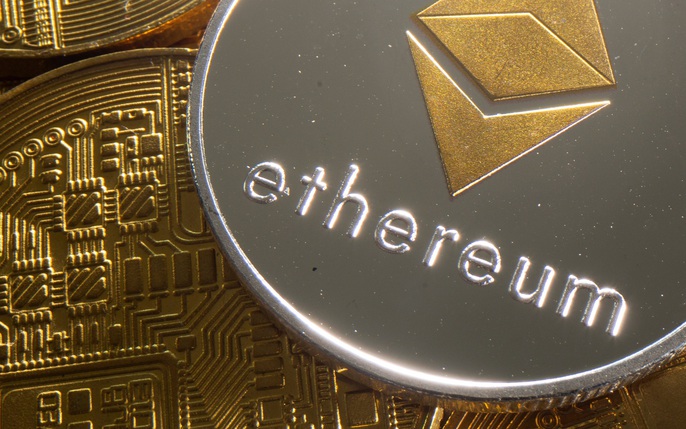Introduction
Ethereum, the world’s second-largest cryptocurrency, is at a critical turning point. In a surprising move, Standard Chartered has labeled Ethereum as facing a “midlife crisis”, claiming that major technological upgrades have failed to attract new users. Even more startling, the bank has slashed its Ethereum price forecast from $10,000 to $4,000 by the end of 2025. This revelation has sent shockwaves through the crypto community. But is Ethereum truly losing its edge? This article unpacks Standard Chartered’s analysis, the reasons behind Ethereum’s challenges, and what it means for the future of ETH and the broader crypto market.
What Does Standard Chartered Say About Ethereum?

Ethereum and the “Midlife Crisis”
Standard Chartered, a leading UK-based financial institution, has shaken the crypto landscape with its assessment that Ethereum is struggling against emerging competitors like Solana and Layer-2 solutions. While the term “midlife crisis” isn’t a technical designation, it suggests a pivotal phase where Ethereum must evolve or risk losing its dominance.
Ethereum Price Forecast Slashed
More than just a bold statement, Standard Chartered has drastically reduced its Ethereum price prediction for late 2025 from $10,000 to $4,000—a sharp 60% drop. The bank argues that Ethereum’s long-term prospects remain solid, but its near-term struggles include rising competition and declining investor enthusiasm.
Why Aren’t Ethereum Upgrades Working?
Recent Major Upgrades
Ethereum has seen significant upgrades in recent years, such as:
- The Merge (2022): Shifted Ethereum from Proof-of-Work (PoW) to Proof-of-Stake (PoS), reducing energy consumption by 99.9%.
- Shanghai Upgrade (2023): Enabled staked ETH withdrawals, increasing liquidity.
- Dencun Upgrade (2024): Lowered transaction costs by improving Layer-2 efficiency.
Despite these advancements, Standard Chartered claims these changes haven’t generated the expected user surge.
User Reality and Gas Fees
Ethereum’s active user base is growing, but not at an explosive rate. According to Etherscan, gas fees remain a barrier, despite improvements. Compared to alternatives like Solana ($0.00025 per transaction) or Arbitrum’s Layer-2 scaling, Ethereum’s fees and transaction speeds still push users toward cheaper alternatives.
Competition From Other Blockchains

Ethereum is facing intense competition from newer, faster, and more cost-efficient networks:
- Solana: Offers near-instant transactions and significantly lower fees.
- Layer-2 Solutions (Arbitrum, Optimism): While easing Ethereum’s congestion, they also divert users away from the main Ethereum network.
- Other Smart Contract Platforms (Avalanche, Binance Smart Chain): Providing faster processing at a lower cost.
Standard Chartered believes Ethereum’s upgrades alone aren’t enough to keep users engaged, creating its so-called “midlife crisis.”
Impact on the Crypto Market
Investor Sentiment Post-Statement
Institutional statements like Standard Chartered’s heavily influence investor sentiment. As a result, Ethereum’s price could face short-term pressure, particularly in a market already sensitive to macroeconomic factors. However, some analysts see this as an opportunity for long-term accumulation if Ethereum’s fundamentals remain strong.
Ethereum’s Role in the Blockchain Ecosystem
Despite concerns, Ethereum remains the backbone of DeFi and smart contracts. Total Value Locked (TVL) on Ethereum still surpasses that of many competitors, according to DefiLlama data. This suggests that while Ethereum faces growing pains, its dominance is far from over.
Future Trends in Cryptocurrency
The real question isn’t just about Ethereum—it’s about the future of blockchain innovation.
- Will Ethereum’s scalability improvements be enough to fend off rivals?
- Can Layer-2 solutions enhance ETH’s appeal rather than fragment its user base?
- Will new entrants disrupt the current dominance of legacy blockchains?
Ethereum’s next moves will be crucial in answering these questions.
How Can Ethereum Escape the “Midlife Crisis”?

1. Improving User Experience
Ethereum must prioritize lowering transaction fees and increasing speed. The adoption of Layer-2 rollups and improved UX for onboarding new users—similar to Solana’s easy access model—could enhance Ethereum’s appeal.
2. Boosting Real-World Applications
Expanding Ethereum’s use in DeFi, NFTs, blockchain gaming, and real-world finance will be key. Strategic partnerships with major corporations could also drive institutional adoption.
3. Stronger Community and Developer Engagement
The Ethereum community must respond proactively. A clear roadmap from Vitalik Buterin and the Ethereum Foundation could restore confidence, ensuring Ethereum doesn’t just survive—but thrives.
Conclusion
Standard Chartered’s claim that Ethereum is facing a “midlife crisis” has sparked widespread debate. While recent upgrades haven’t fully met expectations, and competition is intensifying, Ethereum remains a dominant force in crypto.
This isn’t the end of Ethereum—it’s a wake-up call. The blockchain must refine its scalability, cost efficiency, and real-world use cases to stay ahead. For investors, this presents a critical moment: Is this a temporary setback or an opportunity to buy the dip?
The crypto market is ever-evolving, and Ethereum’s next steps will determine whether it can maintain its leadership. What’s your take on Ethereum’s future? Drop your thoughts below and let’s discuss!
Disclaimer:
This article is for informational purposes only and should not be considered financial advice. Always conduct your own research before making investment decisions.n Ethereum’s future? Drop your thoughts below and let’s discuss!




